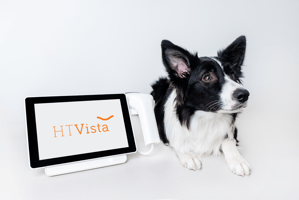Early detection of cancer in dogs is crucial for effective treatment. Heat Diffusion Imaging (HDI)...
How Artificial Intelligence is Revolutionizing Canine Cancer Detection
The advent of artificial intelligence (AI) is transforming various sectors, and veterinary medicine is no exception. Among the most significant advancements is the application of AI in the early detection and diagnosis of cancer in pets, particularly dogs. Leveraging sophisticated algorithms and innovative technologies, AI is helping veterinarians identify cancer more accurately and swiftly, ensuring timely treatment and better outcomes for our furry companions. One groundbreaking tool in this domain is
HT Vista, the first non-invasive screening tool that utilizes Heat Diffusion Imaging (HDI) technology to rule out subcutaneous and dermal cancer in dogs.
The Growing Need for Advanced Canine Cancer Detection
Cancer remains one of the leading causes of death in dogs, with an estimated 50% of dogs over the age of 10 developing some form of cancer. Traditional diagnostic methods, such as biopsies and imaging techniques like X-rays and ultrasounds, often involve invasive procedures that can be stressful for pets and may not always provide conclusive results. This underscores the urgent need for more accurate, non-invasive diagnostic tools that can aid in the early detection of cancer.
The Role of Artificial Intelligence in Veterinary Medicine
AI's role in veterinary medicine extends beyond routine check-ups and into the realm of complex diagnostics. By analyzing vast datasets of medical records, imaging results, and other relevant information, AI algorithms can identify patterns and anomalies that might be indicative of cancer. These insights enable veterinarians to make more informed decisions and provide personalized care for each pet.
Heat Diffusion Imaging (HDI) Technology
One of the most promising AI-driven technologies in this field is Heat Diffusion Imaging (HDI).
HT Vista, developed by a team of experts in veterinary medicine, algorithms, engineering, and design, employs HDI technology to detect subcutaneous and dermal cancers in dogs. This non-invasive tool uses heat patterns to identify abnormal tissue growth, providing a quick and accurate diagnosis without the need for surgical intervention.
How HDI Works
HDI technology works by analyzing the heat diffusion properties of tissues. Cancerous tissues often exhibit different thermal properties compared to healthy tissues due to their increased metabolic activity and abnormal blood vessel formation. By capturing and analyzing these heat patterns, HDI can detect the presence of cancerous cells with high precision.
Benefits of AI-Powered Cancer Detection
Accuracy and Precision
AI algorithms are trained on extensive datasets, enabling them to detect even the slightest anomalies that might be missed by the human eye. This level of accuracy ensures that potential cancers are identified at the earliest possible stage, significantly improving the chances of successful treatment.
Speed and Efficiency
Traditional diagnostic methods can be time-consuming and may require multiple visits to the veterinarian. AI-powered tools like HT Vista provide rapid results, allowing for quicker decision-making and reducing the stress on both pets and their owners.
Non-Invasive Procedures
One of the most significant advantages of AI-driven diagnostic tools is their non-invasive nature.
HT Vista's HDI technology eliminates the need for biopsies and other invasive procedures, making the diagnostic process more comfortable for pets.
Cost-Effectiveness
Early and accurate detection of cancer can lead to more effective treatment plans, potentially reducing the overall cost of treatment. Additionally, non-invasive tools like
HT Vista can lower the expenses associated with traditional diagnostic methods.
Challenges and Future Directions
While the integration of AI in veterinary medicine holds immense promise, it is not without challenges. Ensuring the reliability and accuracy of AI algorithms requires continuous refinement and validation through extensive clinical trials. Additionally, the adoption of AI technologies in veterinary practices necessitates training and education for veterinarians to effectively utilize these tools.
Looking ahead, the future of AI in veterinary medicine is bright. As AI technologies continue to evolve, we can expect even more advanced diagnostic tools that will further enhance the accuracy and efficiency of cancer detection in pets. The integration of AI with other emerging technologies, such as genomics and personalized medicine, will pave the way for a new era of veterinary care.
Conclusion
The application of artificial intelligence in the detection and diagnosis of cancer in pets is revolutionizing veterinary medicine. Tools like
HT Vista are at the forefront of this transformation, offering non-invasive, accurate, and efficient diagnostic solutions that improve the quality of care for our beloved pets. As AI continues to advance, it will undoubtedly play an increasingly vital role in ensuring the health and well-being of our furry friends.



